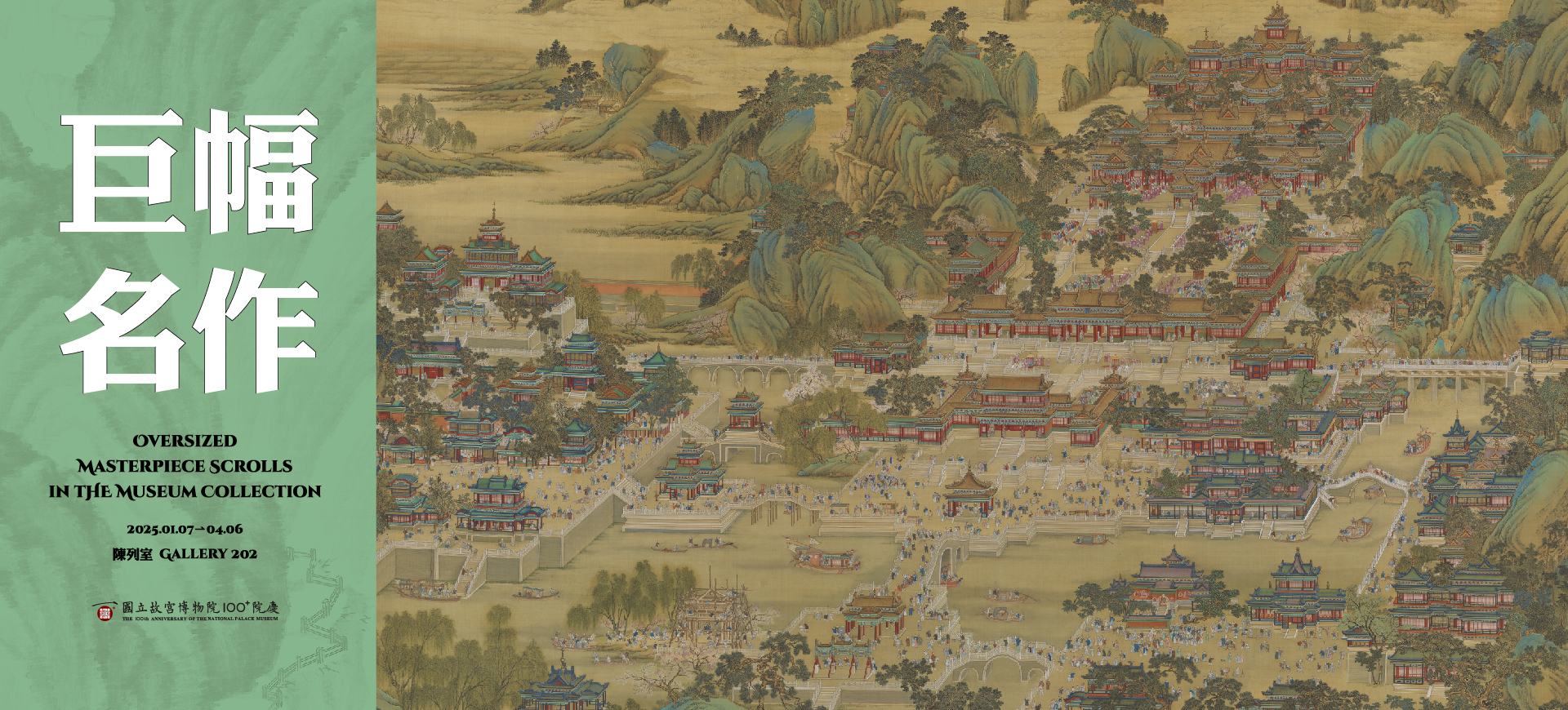Selections
-
After Zhao Mengfu's “Green Pines in Eternal Spring”
Liu Du, Ming dynasty
Silk
Liu Du (fl. 17th century), a painter who lived during the late Ming and early Qing dynasties, had two homonymous style names that both transliterate as Shuxian. He learned painting from the renowned Zhe school painter Lan Ying (1585-after 1664) and modeled his use of brush and ink on the works of the Song and Yuan dynasty masters. Liu primarily painted blue-and-green landscapes in an exquisitely detailed style.
This painting features a verdant evergreen tree motif with two massive pines soaring into the sky, their branches protruding at a variety of angles. The trees are charmingly set off by longevity-promoting reishi mushrooms (Ganoderma lucidum), a Taihu stone, and flowering plants. The painting has a compellingly layered composition in which the trees’ branches and trunks overlap intricately, while the holes in the scholar’s stone reveal scenery in the background, creating spatial depth. Although the inscription declares that it is a copy of a painting by the Yuan dynasty painter Zhao Chengzhi (better known as Zhao Mengfu, 1254-1322), originality can be identified in its brush techniques and color selection—the brushwork is meticulous and the colors possess a lucid prettiness. This is an opulently colored gongbi painting, but it nevertheless eschews folksiness for elegance, making it a precious example of Liu Du’s work. -
Celebrating Feng
Tang Dai, Sun Hu, Shen Yuan, Ding Guanpeng, Wang Youxue, Zhou Kun & Wu Gui, Qing dynasty
Silk
This painting, a large format green-and-blue landscape, features a poem written by Qing dynasty emperor Qianglong (1711-1799) and inscribed by his amanuensis, Yu Minzhong (ca. 1714-1779)—the poem tells us that the painting’s subject matter comes from actual events that occurred during the Han dynasty. Liu Bang, the founding emperor of the Han dynasty, originally came from the city of Feng (present-day Feng county in Jiangsu province). After establishing the empire’s capital in Chang’an, because his father was homesick for Feng, Liu Bang had the streets of the capital renovated in the style of his homeland. He even relocated Feng’s residents to Chang’an.
Employing a bird’s eye view composition, this painting uses gongbi and jiehua (a “ruled-line” approach to depicting architecture) painting techniques to portray the landscape’s palatial structures in exacting scale. The structures nearer to the viewer appear larger than those in the distance, creating a sense of vast spatial depth. With its varied and numerous palaces and street scenes outlined with astonishing detail, this work is an exemplar of collaborative court painting from the Qing dynasty. -
Inscription on the Humble Home
Huang Yingchen, Qing dynasty
SilkHuang Yingchen, a native of Shuntian (present-day Beijing), had the style name Jingyi and the sobriquet Jian’an (“Sword Cottage”). A Qing dynasty court painter, he was active between the Shunzhi and Kangxi reign periods (1644-1722). Huang was a skilled calligrapher and a talented painter whose subjects included human figures, legendary denizens of the underworld, as well as children and babies.
This painting’s subject matter comes from the “Humble Home Inscription,” found in The Complete Writings of the Tang Dynasty; this prose-poem is attributed to Liu Yuxi (772-842), though some say it was actually the work of a different writer. The painting depicts layer upon layer of mountains wrapped around a variety of human dwellings. Mists swirl between the peaks as waterfalls plummet down from their heights. The gathering of erudites in the central building is replete with such signals of elegance as burning incense, a zither player, books and scrolls waiting to be perused, a flower arrangement, and a painted screen; in an adjoining structure, there is also a scene in which tea is being prepared. A delightful miniature bonsai landscape sits just outside the building, and further afield guests are arriving—all features that echo the calligraphic inscription’s contents. The entire scroll was painted using gorgeous coloration, its scenery and subjects depicted with a subtle touch that illustrates the serene, leisurely lifestyle beloved by the ancient literati.


